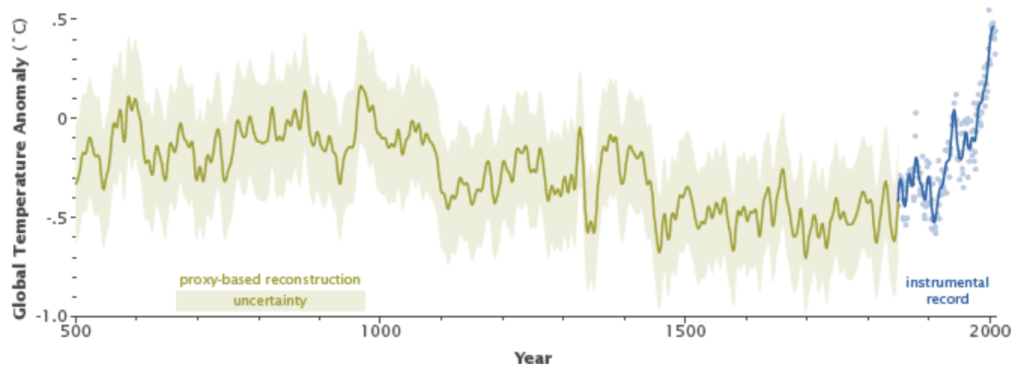The future or our planet depends on us taking action against climate change. The United States of America needs to take a closer look at the economic policies that encourage and allow companies to contribute to climate change and global warming.
There are a number of actions that our country could be taking to reduce our carbon footprint and lessen the progress of climate change, however, there are significant barriers in place that hinder these efforts.
Many of these barriers stem from corporate action. Companies that benefit from the continued use of energy sources that contribute to climate change have a vested interest in hindering the progress of solutions that will move us away from the status quo. Below are a few examples of how corporations have done this:
In the six years prior to 2017, rooftop solar panel installations grew by as much as 900% in the United States. Each year, more and more Americans were taking steps to install solar panels on their roofs, lessen their carbon footprint, and contribute excess energy back into the grid to further diminish the carbon footprint of others who could not afford solar panels. The New York Times reports that in 2017, growth in solar panel installations came “to a shuttering stop.” This was largely because of “a concerted and well-funded lobbying campaign by traditional utilities, which have been working in state capitals across the country to reverse incentives for homeowners to install solar panels.”
In addition, Instead of cutting residents a break for helping solve the climate crisis, the utility companies —led by the American Legislative Exchange Council (ALEC) and the Edison Electric Institute (whose lobbying efforts ratepayers actually underwrite)—are lobbying for the end of “net-metering” laws that let customers sell excess power they generate back to the grid.
Moreover, lobbying is frequently combined with political contributions to, and coordination with politicians. Arizona, whose capital lies in the “Valley of the Sun,” has incredible potential for solar power. However, according to Tuscon.com last year in May, “A federal grand jury has indicted a former state utility regulator and his wife for taking bribes.” The former regulator took those bribes for approving a rate hike for the areas utility company. Despite this indictment, coordination between politicians and utilities in Arizona has not stopped. For instance, environmental groups in Arizona have proposed a constitutional amendment to the Arizona ballot that would require that 50% of Arizona’s energy needs be met with renewable energy sources by 2030. Inside Climate News reports that “a senate committee passed a separate bill—which an APS spokeswoman said the utility had proposed—that would add a second ballot initiative with a nearly identical title” The most recent bill has similar language to the one proposed by environmentalists but includes a “safety valve” that would not allow full implementation of the bill. This approach is designed to confuse and halt progress toward renewable energy.
Arizona is not the only state that has experienced corporate lobbying against climate change solutions, nor is net metering the only issue where corporations have succeeded in moving forward with policies and activities that demonstratively harm the environment. For instance, fracking continues despite numerous studies that show significant damage to the environment and public health.
There are a number of ways that we can hold corporations accountable and stop actions that negatively affect the environment.
Get Money Out of Politics
Too frequently, our politicians are able to be swayed by campaign contributions that lead to decisions that harm the American people, and put the future of our planet in jeopardy. It is all too easy to find the enormous contributions made by companies that contribute to our carbon footprint:
According to Open Secrets: Oil and gas companies have so far contributed over $14 million to all candidates in the 2018 election cycle, electric utilities have contributed over $11 million, natural gas pipeline companies have contributed almost $2 million, and coal mining companies have contributed over $800 thousand.
If we get money out of politics legislators might be more likely to vote for policies and ideas that benefit their constituents, the environment, and the world.
Taxes That Reflect The True Cost of Pollution
A “Carbon Tax” is traditionally considered an “economist’s solution” to fighting climate change. In short, the Carbon Tax Center describes that “A carbon tax is a fee imposed on the burning of carbon-based fuels.” There are two strong arguments for why a carbon tax is both necessary and would work.
- It holds carbon producers and consumers accountable for the damage that their actions have on the environment. To put that damage in perspective, National Geographic reports that “Extreme weather, made worse by climate change, along with the health impacts of burning fossil fuels, has cost the U.S. economy at least $240 billion a year over the past ten years.” Economics Help describes that “The idea of a tax is to make consumers and producers pay the full social cost of producing pollution.” Money raised by the government from this tax could be used to finance initiatives that will further reduce carbon emissions (e.g. subsidizing renewable energy or carbon capture.)
- It creates incentives to for both consumers and producers to act in ways that will reduce their carbon footprint. Producers may invest in ideas that will reduce their carbon emissions to avoid paying as much in taxes. Price increases on items or utilities that include this carbon tax may result in consumers looking to alternative energy sources, or consuming less.
Economics Help describes that “the social marginal cost (SMC) of producing the good is greater than the private marginal cost (PMC) The difference is the external cost of the pollution. The tax shifts the supply curve to S2 and therefore, consumers are forced to pay the full social marginal cost. This reduces the quantity consumed to Q2, which is the socially efficient outcome (because the SMC=SMB)” Therefore, the tax adjusts the price of good to take into account the harm that it is doing.
Carbon Taxes are also proven to have worked elsewhere in the world. British Columbia imposed a carbon tax of 10 Canadian dollars per ton of carbon dioxide in 2008 and then raised that tax to 30 Canadian dollars per ton by 2012. The New York Times reports that the tax “reduced emissions by 5 to 15 percent with ‘negligible effects on aggregate economic performance… It encouraged people to drive somewhat less and be more careful about heating and cooling their homes. Businesses invested in energy efficiency measures and switched to less polluting fuels.”
Get the Incentives Right
Each year, the U.S. government subsidizes a range of economic activities. It is important that those subsidies encourage economic activity that will help reduce our carbon footprint and climate change.
Unfortunately, many subsidies support industries that are contributing to climate change. Researchers at Oil Change International recently found that “Government giveaways in the form of permanent tax breaks to the fossil fuel industry – one of which is over a century old – are seven times larger than those to the renewable energy sector.” These fossil fuel subsidies, including both federal subsidies and state subsidies, total to $20 billion annually.
That said, the renewable energy industry has also received a number of subsidies through the years (varying though different administrations and not to the level of those for the fossil fuel industry). These subsidies have contributed to substantial growth in the renewable energy sector. Eighteen percent of the United States energy needs are now provided by renewable energy. The Environmental and Energy Study Institute states that the U.S. has reduced its emissions “by about 760 million metric tons since 2005.” The increase in renewable energy usage has contributed significantly to that reduction.
These subsidies for renewable energy There are also other benefits to renewable energy subsidies. Quartz Media reported that “the fossil fuels not burnt because of wind and solar energy helped avoid between 3,000 and 12,700 premature deaths in the US between 2007 and 2015” and that “the US saved between $35 billion and $220 billion in that period because of avoided deaths, fewer sick days, and climate-change mitigation.”
Incentives need to reflect economic activities that will help the environment, Americans, and the world, not harm them.
Get the Penalties Right
While incentives are important for companies that are working to help the environment, it is equally important to include penalties for companies that are harming the environment.
Most Americans are familiar with the largest oil spills in the United States like the BP oil spill, also called the Deepwater Horizon oil spill, in 2010. However, large spills that get covered in the news are only a portion of the problem. According to the latest data from the Bureau of Ocean Energy Management, excluding the BP oil spill, 287,416 barrels of oil (or 12 million gallons of oil) were spilled in the U.S. between 1964 and 2015. That equals over two hundred thousand gallons of oil a year. The BP oil spill added another 4.9 million barrels of oil spilled, totaling over two hundred million gallons of oil. (There are 42 gallons of oil in a barrel.)
A number of news organizations reported in 2015 that BP would pay more than $20 billion in settlement claims as punishment for the Deepwater Horizon oil spill. The Justice Department called the settlement historic and quoted Attorney General Loretta Lynch in saying “Building on prior actions against BP and its subsidiaries by the Department of Justice, this historic resolution is a strong and fitting response to the worst environmental disaster in American history…BP is receiving the punishment it deserves, while also providing critical compensation for the injuries it caused to the environment and the economy of the Gulf region.”
However, when you dig deeper into that settlement, that “historic” amount of money isn’t so large when you take into account U.S. tax laws that allow corporations to write off natural resource damage payments, restoration, and reimbursement of government costs. Forbes reports that ultimately “BP should be able to deduct the vast majority, a whopping $15.3 billion, on its U.S. tax return. That means American taxpayers are contributing quite a lot to this settlement, whether they know it or not.”
In other cases, companies are given penalties that can be considered negligible when their annual earnings are taken into account. The Real News reports that “In the last 12 years, Marathon Petroleum Corporation, who manage one of the largest petroleum pipeline networks in the U.S., has had 61 incidents… including recent spill of 42,000 gallons of diesel. In the same week they had to pay A fine of three hundred thousand dollars for another spill last year.” In reference to this three hundred thousand dollar fine, Sierra Club’s Jodi Perras pointed out that Marathon is “a 13.8 billion dollar company…. they will expect to have a 330 million dollar profit this year. And so they are paying $335,000 for that spill in 2016. That’s pennies to a company like that.” Ultimately, Marathon Petroleum Corporation is being fined 0.1% of their annual profits.
Penalties should be large enough to encourage constructive steps towards reducing future accidents and harm to the environment, and when they are large enough, the burden to pay them should be placed on the company, not taxpayers.

